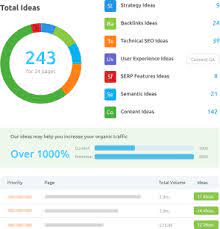The Difference Between a Data Analyst and a Data Scientist
Data analysis has become an integral part of decision-making in various industries, leading to the rise of two key roles: data analysts and data scientists. While both roles involve working with data, there are distinct differences in their responsibilities and skill sets.
Data Analyst
A data analyst is primarily focused on interpreting data to help organisations make informed decisions. They are skilled in collecting, processing, and analysing data to identify trends, patterns, and insights. Data analysts often use statistical tools and software to create reports and visualisations that can be easily understood by non-technical stakeholders.
Typical tasks of a data analyst include cleaning and organising data sets, conducting descriptive analyses, creating dashboards for monitoring key metrics, and generating reports to support business operations. Data analysts play a crucial role in providing actionable insights based on historical data to guide strategic decision-making.
Data Scientist
On the other hand, a data scientist is more focused on predictive modelling and using advanced algorithms to extract meaningful information from large datasets. Data scientists possess strong programming skills and expertise in machine learning techniques that allow them to build complex models for forecasting future trends or solving specific business problems.
Data scientists often work with unstructured or messy data sets, applying techniques such as clustering, classification, regression, and deep learning to uncover hidden patterns or relationships. They are responsible for developing predictive models that can drive innovation, improve processes, or enhance products/services within an organisation.
Key Differences
- Data analysts focus on interpreting past data for descriptive insights; data scientists focus on predicting future outcomes using advanced modelling techniques.
- Data analysts typically use statistical tools like Excel or SQL; data scientists utilise programming languages like Python or R for machine learning algorithms.
- Data analysts support day-to-day operations with reporting and monitoring; data scientists drive strategic decision-making through predictive analytics and experimentation.
Both data analysts and data scientists play critical roles in leveraging the power of data for organisational success. By understanding the distinctions between these roles, businesses can effectively harness the capabilities of each to gain valuable insights and stay ahead in today’s data-driven world.
Key Advantages of Data Analysts and Data Scientists in Driving Business Success
- 1. Data analysts excel in interpreting historical data to identify trends and patterns that can guide decision-making.
- 2. Data analysts are skilled in creating easy-to-understand reports and visualisations for non-technical stakeholders.
- 3. Data analysts play a crucial role in supporting day-to-day operations by monitoring key metrics and providing actionable insights.
- 5. Data analysts contribute to improving business processes and efficiency through their data-driven recommendations.
- 2. Data scientists are proficient in applying machine learning algorithms to extract valuable insights from complex datasets.
Challenges Faced by Data Analysts and Data Scientists: Navigating Career Growth, Automation, and Analytical Precision
- Limited scope for career advancement without further specialisation
- Repetitive tasks of data cleaning and processing can be time-consuming
- Potential for bias in data analysis leading to inaccurate conclusions
- Pressure to meet tight deadlines for report generation and analysis
- Risk of job automation as basic analytical tasks become more automated
- Balancing technical skills with business acumen can be challenging
- Long development cycles for building and testing predictive models
1. Data analysts excel in interpreting historical data to identify trends and patterns that can guide decision-making.
Data analysts play a vital role in leveraging historical data to uncover valuable insights that inform strategic decision-making processes. By adeptly interpreting past data, data analysts excel in identifying trends and patterns that offer a deeper understanding of business operations and performance. Their expertise allows them to extract meaningful information from historical datasets, enabling organisations to make informed decisions based on empirical evidence rather than intuition. Through their analytical skills, data analysts provide valuable guidance for shaping future strategies and enhancing overall business performance.
2. Data analysts are skilled in creating easy-to-understand reports and visualisations for non-technical stakeholders.
Data analysts excel in translating complex data into clear and concise reports and visualisations that are easily digestible for non-technical stakeholders. By leveraging their expertise in data interpretation and visual storytelling, data analysts play a crucial role in bridging the gap between raw data and actionable insights. Their ability to present information in a user-friendly format empowers decision-makers to grasp key trends and patterns, enabling informed decision-making across all levels of an organisation.
3. Data analysts play a crucial role in supporting day-to-day operations by monitoring key metrics and providing actionable insights.
Data analysts are essential in ensuring the smooth functioning of day-to-day operations within an organisation. By monitoring key metrics and analysing data trends, they provide valuable insights that help businesses make informed decisions and adapt quickly to changing circumstances. Their ability to translate complex data into actionable recommendations enables teams to identify areas for improvement, optimise processes, and ultimately drive efficiency and productivity across various departments.
5. Data analysts contribute to improving business processes and efficiency through their data-driven recommendations.
Data analysts play a vital role in enhancing business processes and efficiency by leveraging data-driven insights to make informed recommendations. Their ability to extract valuable information from complex datasets enables them to identify trends, patterns, and opportunities for improvement within an organisation. By analysing historical data and generating actionable recommendations, data analysts help businesses streamline operations, optimise resource allocation, and make strategic decisions that drive growth and success.
2. Data scientists are proficient in applying machine learning algorithms to extract valuable insights from complex datasets.
Data scientists possess a significant advantage in their proficiency to apply machine learning algorithms effectively to extract valuable insights from intricate and extensive datasets. By utilising advanced techniques such as clustering, classification, regression, and deep learning, data scientists can uncover hidden patterns and relationships within data that may not be apparent through traditional analysis methods. This capability enables them to develop predictive models that drive innovation, improve processes, and enhance decision-making within organisations.
Limited scope for career advancement without further specialisation
One significant con for both data analysts and data scientists is the limited scope for career advancement without further specialisation. While entry-level positions may offer opportunities to work with data and gain valuable experience, progressing to higher roles often requires additional specialisation in specific areas such as machine learning, artificial intelligence, or big data analytics. Without continuous upskilling and acquiring advanced expertise, professionals in these fields may find it challenging to unlock new career opportunities or take on more strategic roles within their organisations. Continuous learning and staying abreast of emerging technologies are essential for overcoming this limitation and advancing in the dynamic field of data analysis and data science.
Repetitive tasks of data cleaning and processing can be time-consuming
The downside of being a data analyst or data scientist lies in the repetitive nature of data cleaning and processing tasks, which can consume a significant amount of time. Sorting through vast amounts of data to ensure accuracy and consistency requires meticulous attention to detail and can be a tedious process. This aspect of the job can be challenging as it demands patience and thoroughness to handle the intricacies of data preparation before meaningful analysis can take place. Despite its time-consuming nature, effective data cleaning is essential for producing reliable insights and predictions, highlighting the importance of this foundational aspect in the field of data analysis and science.
Potential for bias in data analysis leading to inaccurate conclusions
One significant con associated with both data analysts and data scientists is the potential for bias in data analysis, which can ultimately result in inaccurate conclusions. Biases can manifest at various stages of the data analysis process, from data collection and preprocessing to model selection and interpretation of results. If not carefully addressed, these biases can skew the outcomes of analyses, leading to flawed insights and decision-making. It is crucial for professionals in these roles to be vigilant in identifying and mitigating biases to ensure that their analyses are objective, reliable, and truly reflective of the underlying data.
Pressure to meet tight deadlines for report generation and analysis
One significant challenge faced by both data analysts and data scientists is the pressure to meet tight deadlines for report generation and analysis. The demand for quick turnaround times can lead to rushed or incomplete analyses, compromising the quality and accuracy of the insights provided. Meeting stringent deadlines may require working long hours and sacrificing thoroughness, potentially impacting the reliability of the conclusions drawn from the data. Balancing speed with precision is essential in ensuring that the analyses conducted by data professionals are robust and truly beneficial to decision-making processes within organisations.
Risk of job automation as basic analytical tasks become more automated
As technology continues to advance, the risk of job automation is becoming a significant concern for data analysts and data scientists. Basic analytical tasks, such as data cleaning, processing, and straightforward reporting, are increasingly being automated through sophisticated software and artificial intelligence tools. This shift means that the traditional roles of data analysts and even some aspects of data scientists’ work are at risk of being replaced by automated systems capable of performing these tasks more efficiently and accurately. Consequently, professionals in these fields must continuously upskill and focus on developing expertise in more complex analytical techniques, strategic decision-making, and creative problem-solving to remain relevant and valuable within their organisations.
Balancing technical skills with business acumen can be challenging
Balancing technical skills with business acumen can be a significant challenge for both data analysts and data scientists. While technical proficiency in data manipulation, statistical analysis, and machine learning is essential for extracting insights from complex datasets, understanding the broader business context is equally crucial. Data professionals must not only possess the technical expertise to derive meaningful conclusions but also translate these findings into actionable recommendations that align with the strategic goals of the organisation. Striking the right balance between technical prowess and business acumen requires continuous learning, effective communication, and a deep understanding of how data-driven insights can drive value for the business.
Long development cycles for building and testing predictive models
One significant challenge faced by both data analysts and data scientists is the long development cycles required for building and testing predictive models. The process of developing accurate and reliable models involves extensive data preparation, feature engineering, algorithm selection, training, validation, and fine-tuning. This iterative cycle can be time-consuming, especially when working with large or complex datasets. The need to ensure model accuracy and generalisation further prolongs the development timeline, impacting the efficiency of decision-making processes within organisations. Overcoming this con necessitates a balance between thorough model development and timely deployment to derive actionable insights in a rapidly evolving business landscape.






